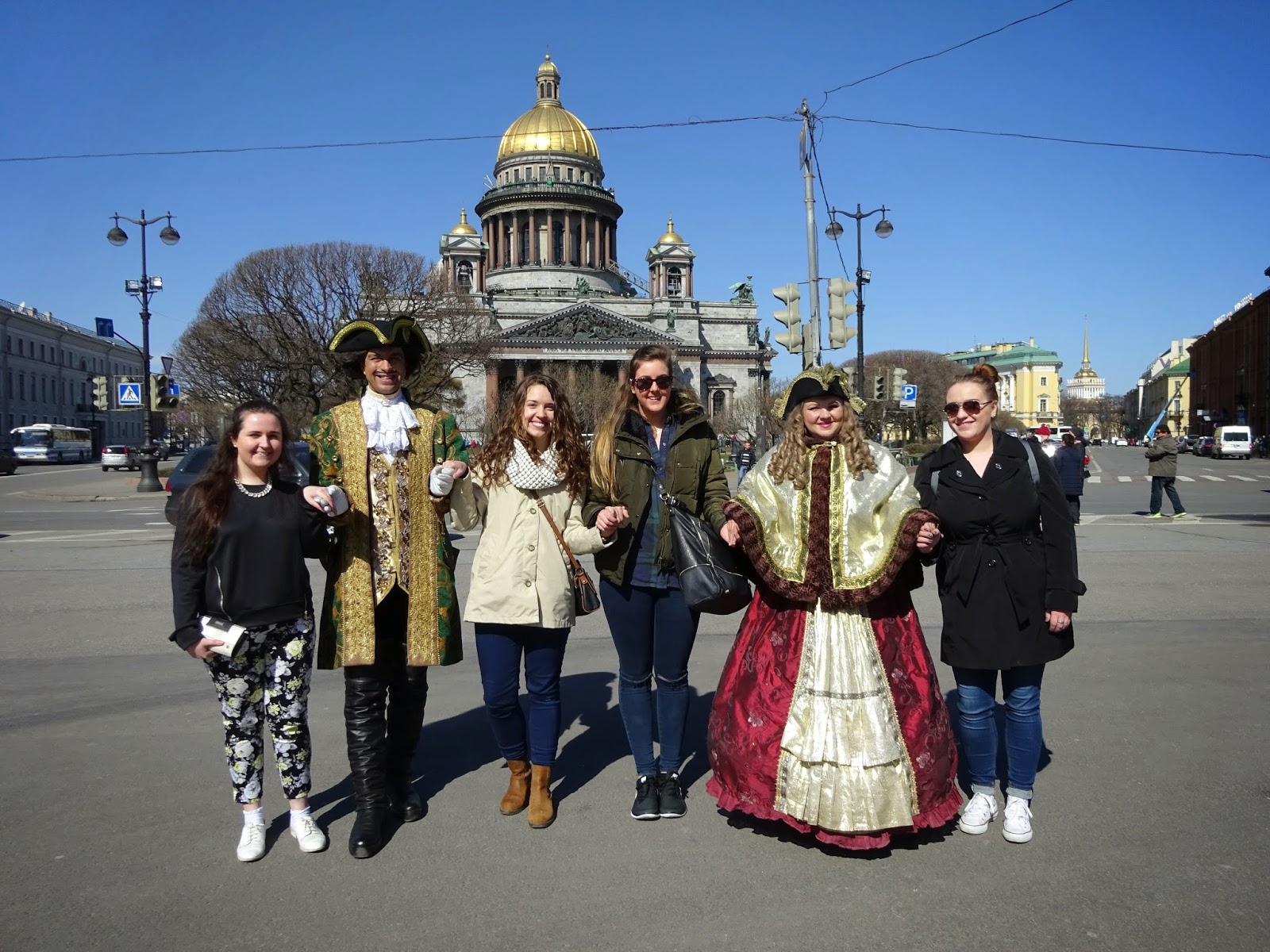Something almost as interesting as the contents of the museums and churches of St. Petersburg was how they were affected by the drastic changes in government and WWII. I think it's easy for Americans to take it for granted that fighting rarely takes place on our own soil. To hear about how a city coped with these things is quite remarkable no matter what side they were on. In St. Petersburg, almost every noteworthy building went through a lot of changes during Soviet times, again during WWII, and once again transitioning to modern day.
I'm no historian. In fact I've never been good at history. Even now I'm getting timelines and details mixed up. But there was something about being in this place that really captured me, perhaps because I got to experience a little taste of something firsthand that I've learned about from only one perspective before in school. And that's the point.
The State Hermitage Museum
This is one of the largest and most famous museums in the world. If you were to look at every item on display for one minute each, you would be in the museum for 8 years! The main building is the Winter Palace, which was the home of the Russian Empire's royal family during the winter time. It's built in baroque style and just so impressive to look at!
During WWII, some museum docents became afraid that the Germans would try to occupy the city at some point, so they decided to take preventative measures to save the collections. Almost everything was taken out of the palace, leaving behind empty frames as a sign of hope that the items would be able to return one day soon. A lot of the items were kept in the museum's basement which was also used as a bomb shelter.
People actually toured the museum despite it being almost completely void of contents. Tour guides would describe what was normally kept in the frames, and the visitors would imagine them. I suppose it was a way to boost morale during hard times.
The collection is obviously massive and I got to see works by Rembrandt, Caravaggio, Michelangelo, Da Vinci, Raphael, Matisse...basically think of a famous artist's name and there will be work with that name on it at this museum. It was very cool!
St. Isaac's Cathedral
This huge church was named after the patron saint of Peter the Great. It took 40 years to build, and the techniques were pretty advanced for the 19th century. It's the 4th tallest dome cathedral in the world, and when it was built it was the largest Orthodox church in the world.
During Soviet rule, everything religious inside was confiscated and was later turned into a museum of atheism (ironic, right?), but of course it was later rededicated as an Orthodox cathedral after the fall of the USSR. A lot of churches were destroyed or turned into things like ice rinks, warehouses, movie theaters, and warehouses. The dome is actually covered in real gold, and it was painted grey during WWII so it wouldn't be spotted during air raids.
Church of Our Savior on Spilled Blood
The oddly-named church is actually called quite a few things, but this is the name that sticks. It was built on the spot where Alexander II was assassinated, so the "spilled blood" refers to that plus Christ's passion.
During Soviet times this church was almost torn down, but thankfully it was left standing. During WWII the space was used as a morgue and then as a vegetable warehouse, donning the nickname of Savior on Potatoes. In the 1970s restoration began on it. The restoration took so long that people joked that as soon as the scaffolding was removed, the Soviet Regime would fall. Sure enough, the scaffolding and the Soviets went down in the same year.
Oddly enough, this church was never a place of worship, but more of a
place to commemorate Alexander II. The interior is
breathtaking--completely covered in mosaics.
Catherine's Palace
The Catherine Palace is another spectacle of royal frivolity, but still just beautiful to look at. It was the summer home of the royal family, since Russians preferred to live in the countryside during the summer months.
The 70ish-room palace was all about parties, and you definitely get that feeling when you're in the dramatic dining rooms and huge gold ballroom. Most famous is the Amber Room (not pictured). The walls were covered in panels of amber mosaics. The panels were stolen when the Germans invaded during WWII, and then the room was recreated later on. They don't allow people to take pictures in that room today, and I think it's because they're superstitious about it.
This lavish buildings and its gardens are celebrated by Russians and visited by tourists because it is one of the most important pre-Soviet artifacts. Our tour guide said that even though Russians only visit it once or twice in their lives, it is very important to them because it helps them remember what Russia was like all those years ago. And after seeing the many grey Soviet-style apartments on the way from St. Petersburg to Pushkin (also called Tsar's Village) where the palace is located, it sure it a sight for sore eyes.











No comments:
Post a Comment